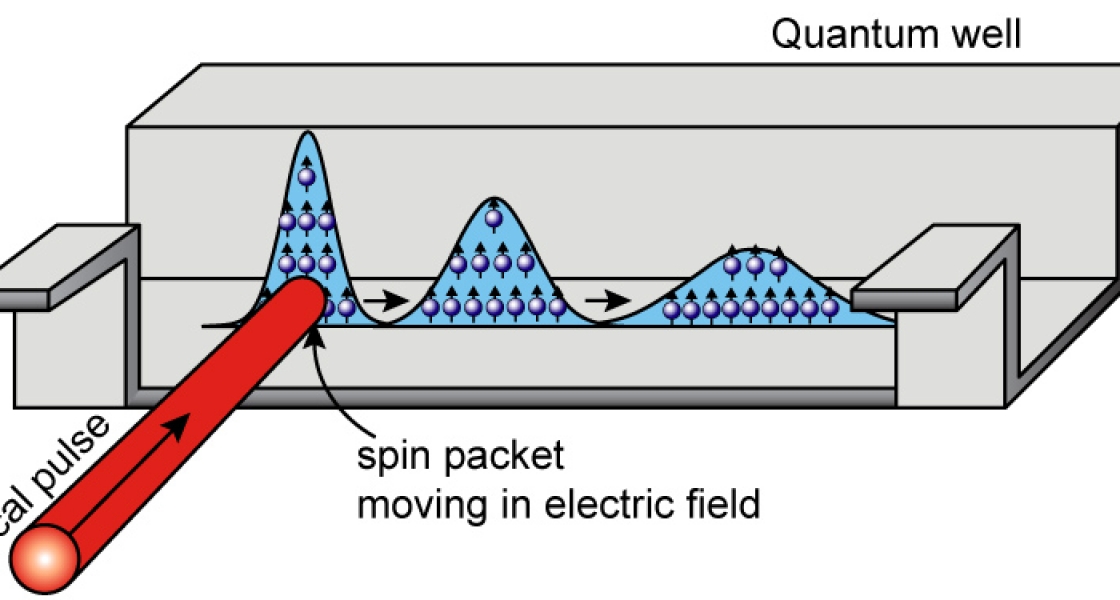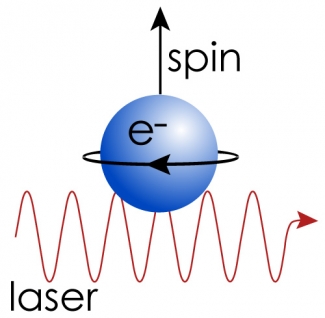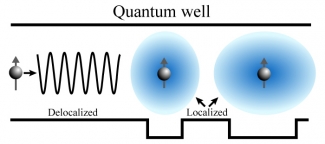Researchers are investigating a new kind of microelectronics called spintronics. These devices will rely on the spindependent behavior of electrons in addition to (or even instead of) conventional charge-based circuitry. Researchers in physics and engineering anticipate that these devices will process data faster, use less power than today's conventional semiconductor devices, and work well in nanotechnologies, where quantum effects predominate. Spin-FETs (field effect transistors), spin-LEDs (light-emitting diodes), spin-RTDs (resonant tunneling devices), terahertz optical switches, and quantum computers are some of the multifunctional spintronic devices being envisioned. The realization of this vision, however, is predicated on a much deeper understanding of fundamental spin interactions in semiconductors.
That's where researchers in Fellow Steve Cundiff's lab come in. Postdoc Sam Carter and graduate student Zhigang Chen are collaborating on laser studies of two electron spin properties that are essential for the development of spin-based electronics: (1) spin transport and (2) spin coherence. Spin transport depends on spin mobility and spin diffusion. Spin mobility is a measure of how fast a spin packet moves in response to an electric field, and spin diffusion describes how rapidly the spin packet spreads out. The coherence time is how long the phase of spin-synchronized electrons remains predictable or, in other words, how long such electrons can carry information. The group studies spin properties in quantum wells in semiconductors because confinement in the wells increases the strength of the light-electron interaction and allows the electrons to be isolated.
In the process of probing spin transport and coherence time, the researchers are also gaining new insights into optical spin control. Although the Cundiff group currently has no plans to actually build a spintronic device, it seeks a better understanding of the fundamental physics that will make such devices possible.





 The Physics Frontiers Centers (PFC) program supports university-based centers and institutes where the collective efforts of a larger group of individuals can enable transformational advances in the most promising research areas. The program is designed to foster major breakthroughs at the intellectual frontiers of physics by providing needed resources such as combinations of talents, skills, disciplines, and/or specialized infrastructure, not usually available to individual investigators or small groups, in an environment in which the collective efforts of the larger group can be shown to be seminal to promoting significant progress in the science and the education of students. PFCs also include creative, substantive activities aimed at enhancing education, broadening participation of traditionally underrepresented groups, and outreach to the scientific community and general public.
The Physics Frontiers Centers (PFC) program supports university-based centers and institutes where the collective efforts of a larger group of individuals can enable transformational advances in the most promising research areas. The program is designed to foster major breakthroughs at the intellectual frontiers of physics by providing needed resources such as combinations of talents, skills, disciplines, and/or specialized infrastructure, not usually available to individual investigators or small groups, in an environment in which the collective efforts of the larger group can be shown to be seminal to promoting significant progress in the science and the education of students. PFCs also include creative, substantive activities aimed at enhancing education, broadening participation of traditionally underrepresented groups, and outreach to the scientific community and general public.